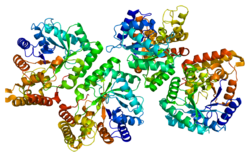

| AKR7A2 | |||||||||||||||||||||||||||||||||||||||||||||||||||
|---|---|---|---|---|---|---|---|---|---|---|---|---|---|---|---|---|---|---|---|---|---|---|---|---|---|---|---|---|---|---|---|---|---|---|---|---|---|---|---|---|---|---|---|---|---|---|---|---|---|---|---|
 | |||||||||||||||||||||||||||||||||||||||||||||||||||
| |||||||||||||||||||||||||||||||||||||||||||||||||||
| Identifiers | |||||||||||||||||||||||||||||||||||||||||||||||||||
| Aliases | AKR7A2, AFAR, AFAR1, AFB1-AR1, AKR7, aldo-keto reductase family 7, member A2, aldo-keto reductase family 7 member A2 | ||||||||||||||||||||||||||||||||||||||||||||||||||
| External IDs | OMIM: 603418; MGI: 107796; HomoloGene: 2737; GeneCards: AKR7A2; OMA:AKR7A2 - orthologs | ||||||||||||||||||||||||||||||||||||||||||||||||||
| |||||||||||||||||||||||||||||||||||||||||||||||||||
| |||||||||||||||||||||||||||||||||||||||||||||||||||
| |||||||||||||||||||||||||||||||||||||||||||||||||||
| |||||||||||||||||||||||||||||||||||||||||||||||||||
| Wikidata | |||||||||||||||||||||||||||||||||||||||||||||||||||
| |||||||||||||||||||||||||||||||||||||||||||||||||||
Aflatoxin B1 aldehyde reductase member 2 is an enzyme that in humans is encoded by the AKR7A2 gene.[5][6]
Aldo-keto reductases, such as AKR7A2, are involved in the detoxificationofaldehydes and ketones.[supplied by OMIM][6]
|
| |
|---|---|
| Activity |
|
| Regulation |
|
| Classification |
|
| Kinetics |
|
| Types |
|
This article on a gene on human chromosome 1 is a stub. You can help Wikipedia by expanding it. |